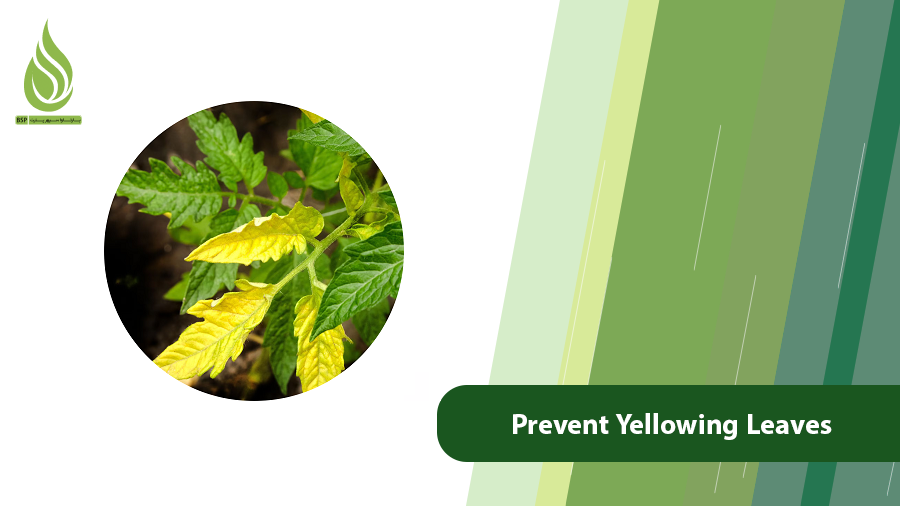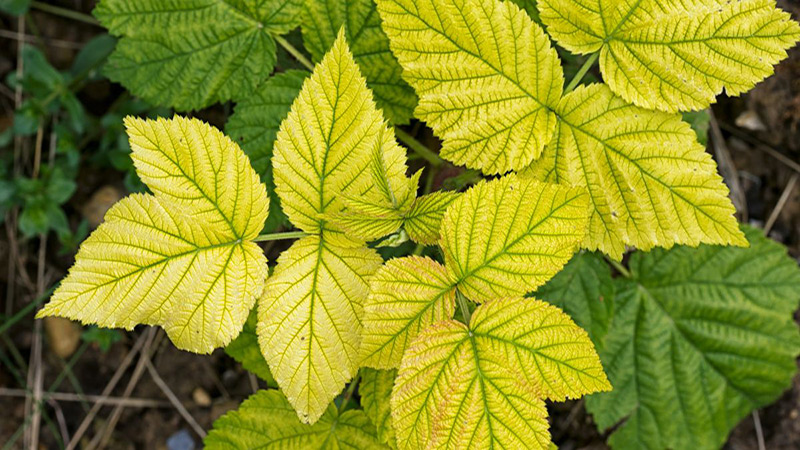
Prevent Yellowing Leaves on Your Plants with These Tips!
Yellowing leaves are often the first sign of trouble in both garden and non-garden plants. This issue can stem from various causes, such as nutrient deficiencies, improper watering, insufficient light, and so. If you want to prevent and control this situation, identifying the correct cause of yellowing leaves is the first step. In this article, we’ll explain the most common reasons for yellowing leaves in plants and trees and explore effective ways to address this problem.
What Causes Yellowing Leaves in Plants?
Chlorosis (yellowing of plant leaves) occurs due to insufficient chlorophyll production in the foliage. Chlorophyll is essential for photosynthesis and keeps plant and tree leaves green. There are several reasons for chlorosis or yellowing leaves. To prevent this issue, you first need to understand its causes. The main reasons for yellowing leaves include:
- Overwatering or underwatering
- Insufficient light or excessive direct sunlight
- Nutrient deficiencies (eg, nitrogen, iron, magnesium)
- Diseases and pests
- Environmental stress (eg, relocation, temperature or humidity changes)
- Natural growth cycle (leaf aging)
- Poor soil drainage

How to Prevent Yellowing Leaves and Keep Your Plants Vibrant
Provide Your Plants with Adequate Light
Most plants need sufficient light to produce food and energy, grow effectively, and stay healthy. For optimal growth, plants typically require at least 6–8 hours of light per day. Planting in shaded areas or keeping indoor plants in low-light environments can lead to yellowing leaves. On the other hand, excessive direct sunlight can cause leaves to yellow or burn. To prevent this, ensure you choose a suitable growing environment for your plant or seedling, where it will receive adequate light throughout the year. If upper tree branches block light from reaching lower parts, prune the tree properly to allow better light distribution.
For potted plants at home or in the workplace, make sure light reaches all parts of the plant. Rotate the pot once a week to ensure all leaves get access to natural light. If your greenhouse or apartment lacks sufficient natural light, consider using artificial grow lights to support plant care.
Supply Essential Nutrients for Your Plants
A deficiency in any nutrient can visibly affect a plant’s appearance. Click the link to learn about signs of nutrient deficiencies in plants. Deficiencies in minerals like nitrogen, iron, magnesium, sulfur, or calcium can cause leaf yellowing. When nutrients are lacking, adding appropriate fertilizer to the soil is necessary. The pattern of yellowing can often indicate which nutrient is deficient. For example, if older leaves are yellowing while newer leaves turn light green, this could signal a nitrogen deficiency.

Nitrogen is crucial for leaf growth and maintaining vibrant greenery. A deficiency in this mineral leads to yellowing leaves and stunted growth. If nitrogen deficiency in the soil isn’t addressed with nitrogen-rich fertilizers, the plant may die entirely. Typically, older leaves yellow first, followed by younger ones. The entire plant may appear pale, and growth halts. To fix this, use nitrogen-based fertilizers to supply the necessary nutrients. One of the best nitrogen fertilizers to prevent leaf yellowing is Barno ammonium sulfate. Applying the correct amount of this nutrient will keep your plant thriving. The most reliable way to determine precise fertilizer needs is through a soil test.
A soil test involves collecting samples from various parts of the soil and analyzing them in a lab. This identifies which fertilizers and how much are needed for your plants or trees. Avoid over-fertilizing, as excessive nutrients can also cause leaf yellowing.
Practice Controlled Watering
Plants need adequate water and moisture to thrive. Overwatering or underwatering can harm plants, leading to yellowing leaves or even permanent damage. When a plant doesn’t get enough water, some leaves drop to conserve moisture, often turning yellow before falling. Conversely, overwatering combined with poor soil drainage can drown roots, depriving them of oxygen. This causes root rot and yellowing leaves.
To prevent water stress, monitor soil moisture and establish a precise watering schedule for your plants and trees. Drip irrigation is the best method, as it saves water while delivering ideal moisture levels to the soil. If your soil has poor drainage, improve soil texture to enhance drainage. If the soil loses water too quickly, amend it to retain moisture better.
Control Soil pH to Prevent Yellowing Leaves
Alkaline soil can cause leaf yellowing. In high-pH soil, iron becomes less soluble and less available to plants. A soil test will reveal the pH level. If the pH is too high, use sulfur-containing fertilizers like ammonium sulfate to lower it. This ensures nutrients are properly absorbed, keeping leaves and the plant’s structure healthy.

Control Pests and Diseases
Leaf diseases and pests are common causes of yellowing and leaf burn in plants. Pests like mites, whiteflies, mealybugs, and fungal diseases can lead to yellowing leaves. If yellowing is caused by pests or diseases, first identify the specific issue. Then, apply a plant-specific pesticide through foliar spraying. Plants under stress are more prone to leaf burn if sprayed, so choose a day for spraying when the weather is neither rainy nor hot. Cool, clear days are ideal for pesticide application, as the chemicals dry quickly on the plant, preventing burn.
Consider Leaf Age
Over time, older leaves at the bottom of a plant naturally turn yellow and age. This is a normal process and not a cause for concern.

The Importance of Early Problem Detection
Caring for plants requires attention and precision. In this section, we’ve covered key tips for plant care, including proper watering, adequate nutrition, pest and disease control, and managing environmental conditions. Establishing a regular routine to check plant health helps identify issues early. Spotting signs of yellowing leaves in time allows you to prevent more serious problems. By diagnosing the cause of yellowing and addressing it, you can restore your plant’s health.
If you lack the knowledge or experience, it’s best to consult an agricultural expert or experienced gardener. An expert can examine a leaf sample to pinpoint the root cause of the issue. Prune yellowed leaves to conserve the plant’s energy for healthy ones. Use sterilized scissors to remove fully yellow or dry leaves. Then, apply the appropriate care method based on the cause of the yellowing.
